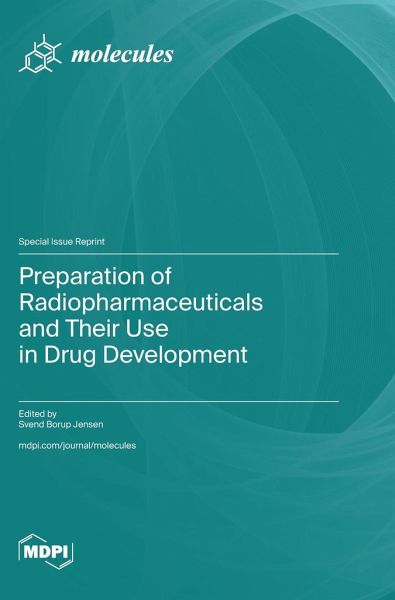
Preparation of Radiopharmaceuticals and Their Use in Drug Development
Versandkostenfrei!
Versandfertig in 1-2 Wochen
83,99 €
inkl. MwSt.

PAYBACK Punkte
42 °P sammeln!
The purpose of this Special Issue is to bring together research and review papers that use radiopharmaceuticals in drug development. Labeling a potential drug with a radionuclide for imaging and injecting radiopharmaceuticals into animals or humans can immediately provide information about the in vivo destiny of the compound through the application of PET or SPECT scanners. Radionuclides can be useful throughout the whole process of developing new drugs; in particular, if the results obtained are negative and the potential drug can be discarded early on in the process, considerable effort and ...
The purpose of this Special Issue is to bring together research and review papers that use radiopharmaceuticals in drug development. Labeling a potential drug with a radionuclide for imaging and injecting radiopharmaceuticals into animals or humans can immediately provide information about the in vivo destiny of the compound through the application of PET or SPECT scanners. Radionuclides can be useful throughout the whole process of developing new drugs; in particular, if the results obtained are negative and the potential drug can be discarded early on in the process, considerable effort and money can be saved. An alternative way to obtain information about the in vivo destiny/effect of a potential drug is to imagine, for example, a target organ or a tumor with radiopharmaceuticals before and after treatment with a drug. Determining how a drug is metabolized is an integrated part of drug development. Labeling a drug with a radionuclide and providing it with a radioactive tag can help in subsequently determining its location and quantifying metabolites. If the metabolites can be extracted, the solutions can be examined through analytical measurements. Using ionizing radiation in the treatment of tumors is also an application for radiopharmaceuticals which is expected to expand greatly in the years to come. By labeling a specific compound with a radionuclide used for diagnostics we can establish whether it accumulates in the tumor. The same compound is thereafter combined with a radionuclide for treatment. This Special Issue contains seven original research papers, one communication, and two reviews.












